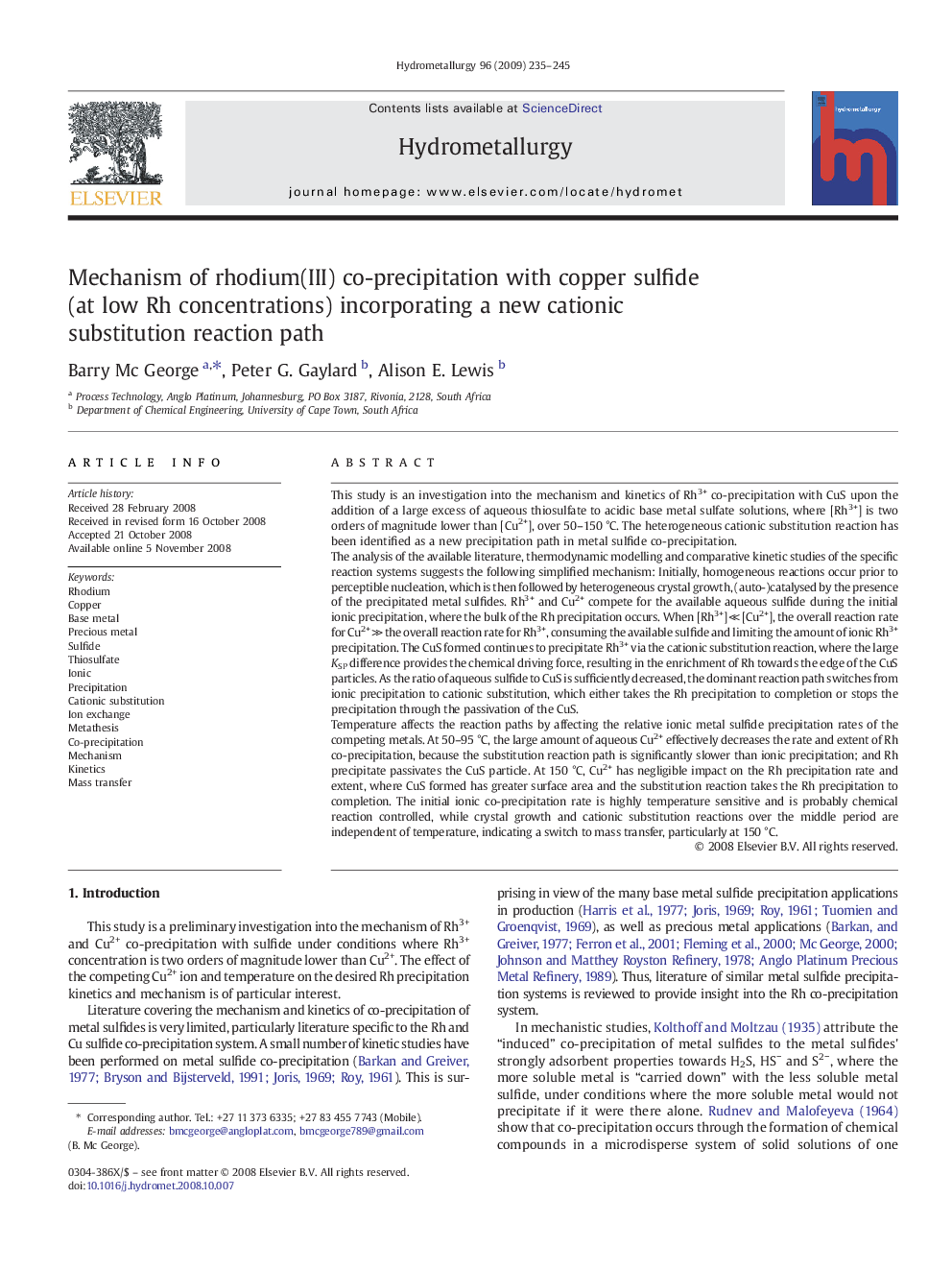| کد مقاله | کد نشریه | سال انتشار | مقاله انگلیسی | نسخه تمام متن |
|---|---|---|---|---|
| 213142 | 462083 | 2009 | 11 صفحه PDF | دانلود رایگان |

This study is an investigation into the mechanism and kinetics of Rh3+ co-precipitation with CuS upon the addition of a large excess of aqueous thiosulfate to acidic base metal sulfate solutions, where [Rh3+] is two orders of magnitude lower than [Cu2+], over 50–150 °C. The heterogeneous cationic substitution reaction has been identified as a new precipitation path in metal sulfide co-precipitation.The analysis of the available literature, thermodynamic modelling and comparative kinetic studies of the specific reaction systems suggests the following simplified mechanism: Initially, homogeneous reactions occur prior to perceptible nucleation, which is then followed by heterogeneous crystal growth, (auto-)catalysed by the presence of the precipitated metal sulfides. Rh3+ and Cu2+ compete for the available aqueous sulfide during the initial ionic precipitation, where the bulk of the Rh precipitation occurs. When [Rh3+] ≪ [Cu2+], the overall reaction rate for Cu2+ ≫ the overall reaction rate for Rh3+, consuming the available sulfide and limiting the amount of ionic Rh3+ precipitation. The CuS formed continues to precipitate Rh3+ via the cationic substitution reaction, where the large KSP difference provides the chemical driving force, resulting in the enrichment of Rh towards the edge of the CuS particles. As the ratio of aqueous sulfide to CuS is sufficiently decreased, the dominant reaction path switches from ionic precipitation to cationic substitution, which either takes the Rh precipitation to completion or stops the precipitation through the passivation of the CuS.Temperature affects the reaction paths by affecting the relative ionic metal sulfide precipitation rates of the competing metals. At 50–95 °C, the large amount of aqueous Cu2+ effectively decreases the rate and extent of Rh co-precipitation, because the substitution reaction path is significantly slower than ionic precipitation; and Rh precipitate passivates the CuS particle. At 150 °C, Cu2+ has negligible impact on the Rh precipitation rate and extent, where CuS formed has greater surface area and the substitution reaction takes the Rh precipitation to completion. The initial ionic co-precipitation rate is highly temperature sensitive and is probably chemical reaction controlled, while crystal growth and cationic substitution reactions over the middle period are independent of temperature, indicating a switch to mass transfer, particularly at 150 °C.
Journal: Hydrometallurgy - Volume 96, Issue 3, April 2009, Pages 235–245